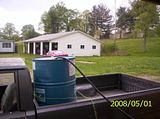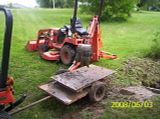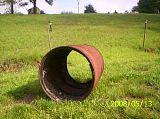Ken45101
Elite Member
- Joined
- Feb 14, 2009
- Messages
- 3,655
- Location
- southern Ohio
- Tractor
- Kubota M5040, M9540, B21 TLB, B2710, RTV900, JD 325 Skid steer, KX-121-3 mini excavator
My father-in-law is on his 2nd BX 24 with FEL and BH. His property is very hilly. He also uses his BX on other properties that are steep as well. He has owned and used a BX for so many years that he has gotten very comfortable with using his tractor on the steep hills. He has told me often that the only way you will ever get comfortable and confident in your tractor is to test it out and use it allot to get comfortable on it. He has never had any problems or any possible tip overs and he has been in places that I would not attempt. Just use the old seat of your pants rule...that works for me:thumbsup:
That is true...to an extent. However, just because one has experience under their belt does not make them safe. Farmers with years of seat time roll tractors and get killed. Overconfidence can be deadly.
I have a friend who was an assistant fire chief in a rural VFD. Every year they had roll overs with injuries or death. Often there is no warning when a tractor starts to go over.
Be safe out there!
Ken


